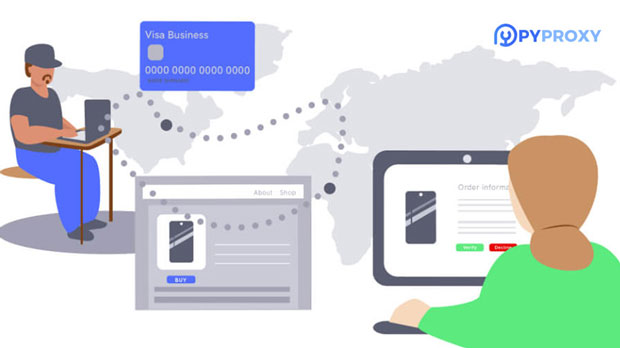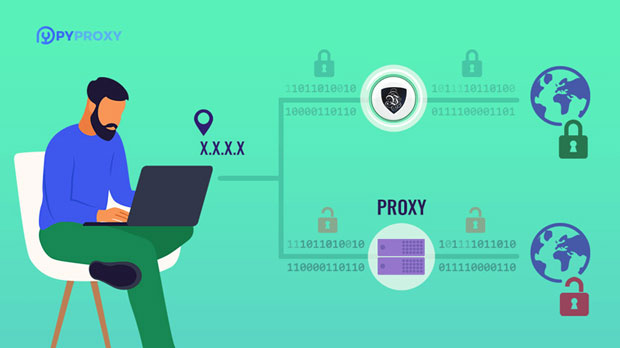Proximity servers have become essential tools in the collection and processing of big data, especially in industries where location-based information is crucial. They provide a way to efficiently track, analyze, and process data from nearby devices, sensors, or users within a specific proximity. This technology is increasingly applied across various sectors, including retail, transportation, and smart cities, where it helps businesses gain deeper insights into user behavior, preferences, and movements. The proximity server enables real-time data processing, which is critical for making data-driven decisions in dynamic environments. This article will explore the applications, benefits, and impact of proximity servers in big data collection. Introduction to Proximity ServersProximity servers are a type of technology designed to gather and process data from devices, sensors, or other sources within a defined physical range. These servers typically use wireless communication protocols, such as Bluetooth Low Energy (BLE), Wi-Fi, or NFC (Near Field Communication), to interact with nearby devices and capture real-time data. The proximity data collected can include information such as location, activity level, and even specific actions taken by users.In the context of big data, proximity servers provide an important function by enabling the collection of massive amounts of location-based data, which can be analyzed to generate insights into customer behavior, movement patterns, and environmental conditions. This data is valuable for industries such as retail, healthcare, and smart cities, where understanding the proximity of individuals or devices can lead to better decision-making and enhanced services.The Role of Proximity Servers in Big Data Collection1. Real-Time Data Collection and ProcessingOne of the primary advantages of proximity servers in big data collection is their ability to collect and process data in real time. This is particularly important for industries that rely on dynamic, time-sensitive information. For example, in retail environments, proximity servers can track customer movements within a store and analyze their shopping behavior in real time. This allows businesses to adjust their marketing strategies, display arrangements, and even staffing levels based on customer activity patterns.In smart cities, proximity servers can gather data from sensors embedded in various infrastructures, such as traffic lights, public transport, and waste management systems. The real-time data collected can help city planners optimize resource allocation, reduce congestion, and improve the overall quality of life for residents.2. Enhanced Customer ExperienceAnother significant application of proximity servers is in improving the customer experience. By tracking customer movements and interactions with products or services, businesses can personalize their offerings and provide more targeted recommendations. For instance, in a retail setting, proximity servers can detect when a customer enters a specific aisle and push tailored promotions or product information to their mobile device, increasing the likelihood of a purchase.This level of personalization can also be extended to other industries, such as healthcare, where proximity servers can track patients' locations within a hospital and provide real-time updates on appointment schedules, waiting times, or staff availability. This enhances the patient experience by reducing wait times and improving the overall efficiency of healthcare services.3. Data-Driven Decision MakingProximity servers enable organizations to make more informed, data-driven decisions. By capturing and analyzing large volumes of location-based data, businesses can gain valuable insights into customer behavior, market trends, and operational efficiencies. This can lead to improved strategies for product placement, resource management, and marketing campaigns.For example, retail chains can use proximity data to determine which areas of a store attract the most foot traffic and adjust product displays or promotions accordingly. Similarly, transportation companies can use proximity data to optimize routes, reduce delays, and improve the overall passenger experience.4. Scalability and FlexibilityAs industries continue to embrace the Internet of Things (IoT) and the proliferation of connected devices, the scalability of proximity servers becomes increasingly important. These servers can easily accommodate large volumes of data from a wide range of devices, allowing businesses to expand their data collection capabilities as needed. The ability to scale ensures that proximity servers remain effective even as the volume of data grows.Moreover, proximity servers are highly flexible and can be integrated into a variety of existing systems, such as point-of-sale (POS) systems, customer relationship management (CRM) software, and enterprise resource planning (ERP) platforms. This makes it easier for businesses to leverage proximity data in their daily operations without the need for significant infrastructure changes.Benefits of Using Proximity Servers in Big Data Collection1. Cost EfficiencyProximity servers can reduce operational costs by automating data collection processes. For example, instead of relying on manual data entry or traditional methods of tracking customer movements, businesses can use proximity servers to automatically gather and analyze data in real time. This reduces the need for human intervention and minimizes errors associated with manual data collection.2. Improved Accuracy and PrecisionBecause proximity servers collect data through advanced wireless technologies like BLE, they can provide highly accurate location information with minimal interference. This level of precision is crucial for industries like logistics and healthcare, where accurate tracking of assets, equipment, and people is necessary for smooth operations.3. Enhanced SecurityProximity servers can also contribute to enhanced security by monitoring the movement of sensitive equipment or personnel within a defined area. For instance, in a warehouse or manufacturing facility, proximity servers can track the location of high-value inventory and trigger alerts if unauthorized movements are detected. Similarly, proximity servers can be used in healthcare environments to ensure that only authorized personnel access restricted areas.Challenges in Implementing Proximity ServersWhile proximity servers offer numerous benefits, there are also challenges in their implementation. One of the primary challenges is ensuring data privacy and security. As proximity servers collect sensitive location-based information, businesses must ensure that they comply with data protection regulations and maintain robust security measures to prevent unauthorized access.Additionally, the integration of proximity servers with existing systems can be complex, particularly for large organizations with legacy infrastructure. Companies must invest in training and development to ensure that staff can effectively use the new technology.ConclusionProximity servers play a critical role in the collection and analysis of big data, particularly in industries that rely on location-based information. Their ability to collect real-time data, improve customer experiences, and enable data-driven decision-making makes them an invaluable tool for businesses looking to gain a competitive edge. As proximity technologies continue to evolve, businesses will have even greater opportunities to harness the power of big data to optimize operations, enhance customer engagement, and drive growth.
Jul 14, 2025



































































